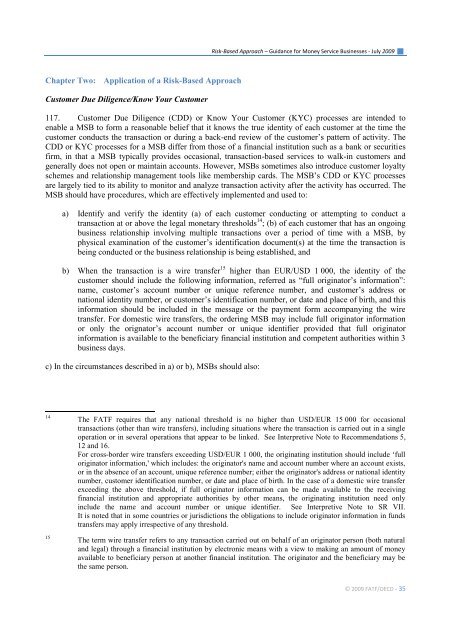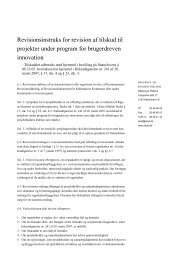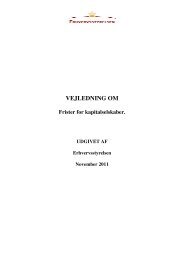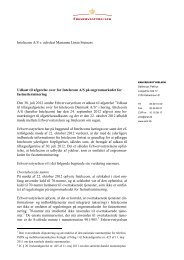Risk-Based Approach â Guidance for Money Service Businesses
Risk-Based Approach â Guidance for Money Service Businesses
Risk-Based Approach â Guidance for Money Service Businesses
Create successful ePaper yourself
Turn your PDF publications into a flip-book with our unique Google optimized e-Paper software.
<strong>Risk</strong>-<strong>Based</strong> <strong>Approach</strong> – <strong>Guidance</strong> <strong>for</strong> <strong>Money</strong> <strong>Service</strong> <strong>Businesses</strong> - July 2009 Chapter Two: Application of a <strong>Risk</strong>-<strong>Based</strong> <strong>Approach</strong>Customer Due Diligence/Know Your Customer117. Customer Due Diligence (CDD) or Know Your Customer (KYC) processes are intended toenable a MSB to <strong>for</strong>m a reasonable belief that it knows the true identity of each customer at the time thecustomer conducts the transaction or during a back-end review of the customer‟s pattern of activity. TheCDD or KYC processes <strong>for</strong> a MSB differ from those of a financial institution such as a bank or securitiesfirm, in that a MSB typically provides occasional, transaction-based services to walk-in customers andgenerally does not open or maintain accounts. However, MSBs sometimes also introduce customer loyaltyschemes and relationship management tools like membership cards. The MSB‟s CDD or KYC processesare largely tied to its ability to monitor and analyze transaction activity after the activity has occurred. TheMSB should have procedures, which are effectively implemented and used to:a) Identify and verify the identity (a) of each customer conducting or attempting to conduct atransaction at or above the legal monetary thresholds 14 ; (b) of each customer that has an ongoingbusiness relationship involving multiple transactions over a period of time with a MSB, byphysical examination of the customer‟s identification document(s) at the time the transaction isbeing conducted or the business relationship is being established, andb) When the transaction is a wire transfer 15 higher than EUR/USD 1 000, the identity of thecustomer should include the following in<strong>for</strong>mation, referred as “full originator‟s in<strong>for</strong>mation”:name, customer‟s account number or unique reference number, and customer‟s address ornational identity number, or customer‟s identification number, or date and place of birth, and thisin<strong>for</strong>mation should be included in the message or the payment <strong>for</strong>m accompanying the wiretransfer. For domestic wire transfers, the ordering MSB may include full originator in<strong>for</strong>mationor only the orignator‟s account number or unique identifier provided that full originatorin<strong>for</strong>mation is available to the beneficiary financial institution and competent authorities within 3business days.c) In the circumstances described in a) or b), MSBs should also:1415The FATF requires that any national threshold is no higher than USD/EUR 15 000 <strong>for</strong> occasionaltransactions (other than wire transfers), including situations where the transaction is carried out in a singleoperation or in several operations that appear to be linked. See Interpretive Note to Recommendations 5,12 and 16.For cross-border wire transfers exceeding USD/EUR 1 000, the originating institution should include „fulloriginator in<strong>for</strong>mation,' which includes: the originator's name and account number where an account exists,or in the absence of an account, unique reference number; either the originator's address or national identitynumber, customer identification number, or date and place of birth. In the case of a domestic wire transferexceeding the above threshold, if full originator in<strong>for</strong>mation can be made available to the receivingfinancial institution and appropriate authorities by other means, the originating institution need onlyinclude the name and account number or unique identifier. See Interpretive Note to SR VII.It is noted that in some countries or jurisdictions the obligations to include originator in<strong>for</strong>mation in fundstransfers may apply irrespective of any threshold.The term wire transfer refers to any transaction carried out on behalf of an originator person (both naturaland legal) through a financial institution by electronic means with a view to making an amount of moneyavailable to beneficiary person at another financial institution. The originator and the beneficiary may bethe same person.© 2009 FATF/OECD - 35
















